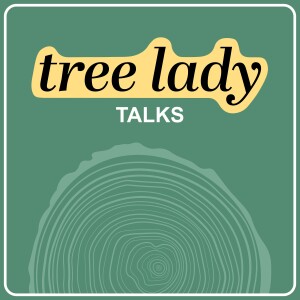
Callum Throw - Technology in Arb - AI Strikes!
 2024-09-05
2024-09-05
Send us a text
In this episode, Sharon and Callum discuss the use of AI and technology in the arboriculture industry. Callum explains that AI has been around for decades and has been used in various applications, such as loan applications and predictive text. In the forestry industry, AI has been used for mapping deforestation and monitoring pests and diseases. Callum emphasizes the importance of training AI models to get the desired output and highlights the need for social responsibility in shaping AI. He also shares how he uses AI in his daily work as an arboriculture consultant, including keyword research, report writing, and pricing jobs. In this part of the conversation, Callum discusses the use of Chat GPT, photogrammetry, and virtual reality (VR) in arboriculture. He explains how Chat GPT can assist in generating reports and providing structure, while still requiring human input for analysis and assessment. Callum also highlights the ethical concerns of making GPT publicly accessible. He then delves into the concept of photogrammetry, explaining how it works and the benefits of using apps like Polycam to create 3D models of trees. He emphasizes the importance of hosting these models on online platforms for easy access. Callum then explores the potential of VR and augmented reality (AR) in arboriculture, particularly in training and education. He discusses the immersive experience of VR and its ability to improve knowledge retention. Lastly, Callum touches on the limitations and benefits of using drones for tree surveys, including the accurate mapping of trees in the absence of graphical surveys. Drones equipped with multispectral cameras can be used for NDVI (Normalised Difference Vegetation Index) to identify stressed or low vitality trees. They are valuable for ash dieback surveys, identifying trees in distress, and conducting feasibility studies. Drones can also be used for creating 3D models of sites, providing better context than traditional maps. Leveraging social media, particularly platforms like TikTok, can help attract younger people to the industry. Authentic and engaging content that adds value is key. AI and apps have the potential to scan trees and identify defects, as well as generate detailed weather forecasts for the arboricultural industry. Immersive videos and virtual reality can be used to showcase different aspects of the industry and attract young talent.
For more episodes in the Tree Lady Talks Archive click here.
More Episodes
 2024-11-15
2024-11-15
 2024-11-08
2024-11-08
 2024-11-01
2024-11-01
 2024-10-24
2024-10-24
 2024-10-18
2024-10-18
 2024-10-10
2024-10-10
 2024-10-03
2024-10-03
 2024-09-19
2024-09-19
 2024-08-29
2024-08-29
 2024-07-26
2024-07-26
Create your
podcast in
minutes
- Full-featured podcast site
- Unlimited storage and bandwidth
- Comprehensive podcast stats
- Distribute to Apple Podcasts, Spotify, and more
- Make money with your podcast
It is Free
- Privacy Policy
- Cookie Policy
- Terms of Use
- Consent Preferences
- Copyright © 2015-2024 Podbean.com




